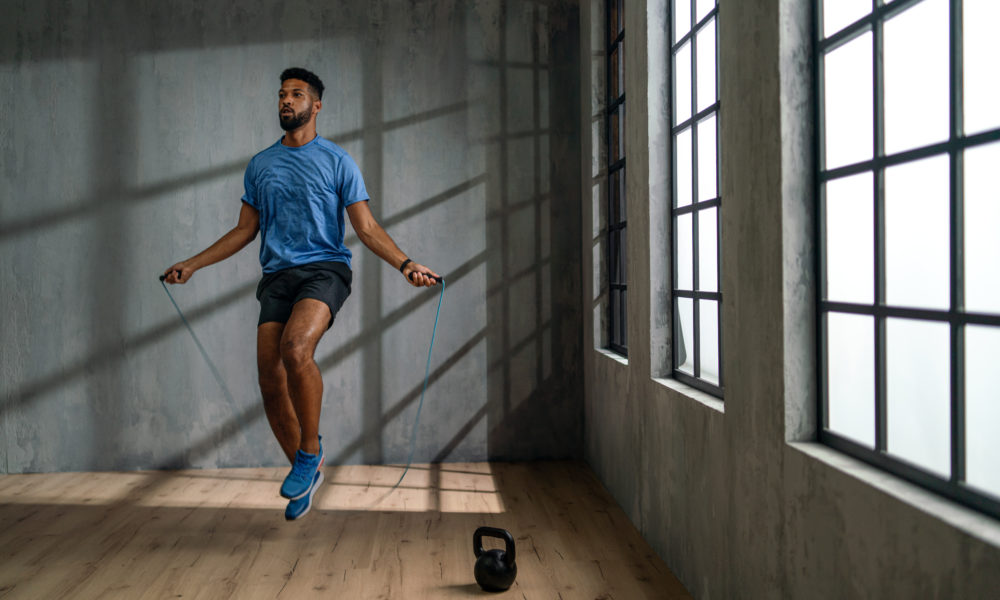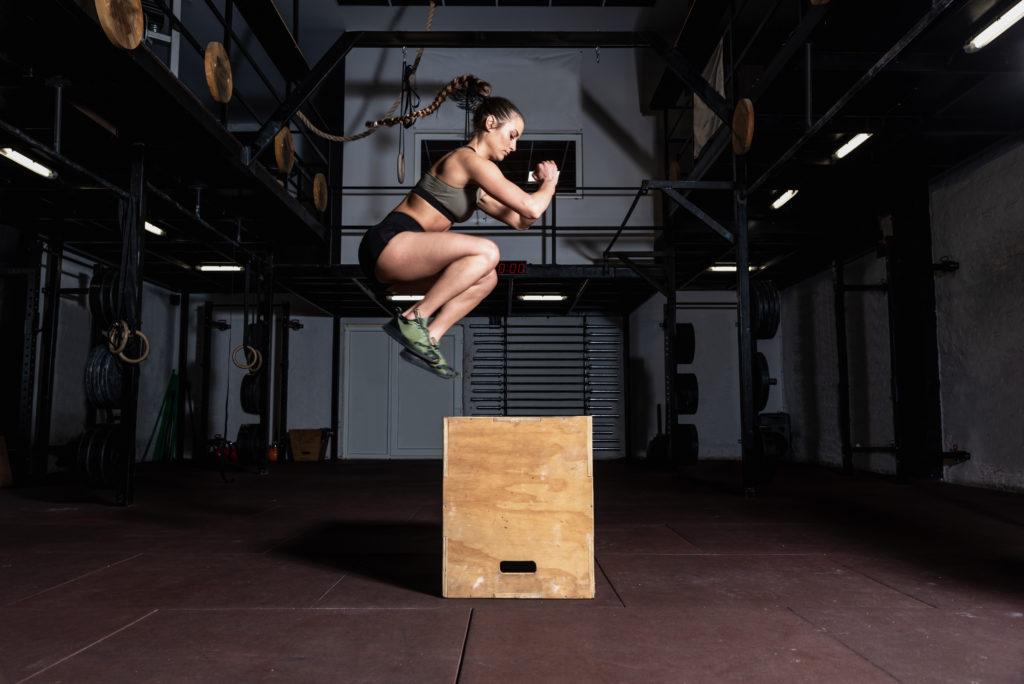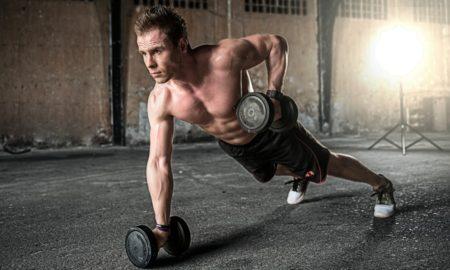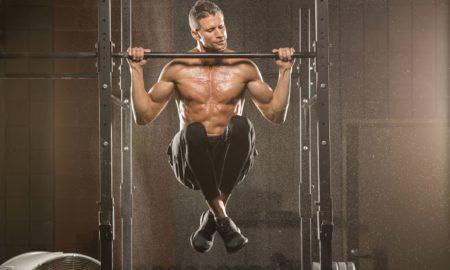

If you want to add more plyometrics to your gym workout, let’s look at the ten best exercises to help you build explosive power, muscular strength, and speed.
Plyometric workouts are a perfect way to improve your performance on the field or in the weight room. The best part is you can do plyometrics anywhere (at home or the gym) without needing equipment.
Plyometric exercises are great for athletes, but you can also use them to improve everyday strength, flexibility, reaction time, and other essential athletic skills in any sport.
Whether it’s losing weight, improving your conditioning, or getting a lean body with more power, the ten plyometrics in this article will help you get there. But before that, let’s look at plyometrics, the targeted area it works on, and its relation with various health conditions.
What Is Plyometric?
Plyometric is a series of powerful aerobic exercises that increase muscular contractions’ speed, power, and efficiency. The activities demand you to use your muscles to their full extent in a short amount of time.
Plyometric exercises can help improve your overall athletic performance in sports and physical activities by increasing your strength, speed and agility. You can also use them to enhance body coordination, prevent injury and burn fat.
Plyometric exercises are also known as “jump training” because they involve jumping or bounding with explosive power. Athletes often use them to help improve their jumping ability and increase their athleticism when performing activities such as running and jumping.
Plyometric exercises can be difficult for beginners in fitness. Before you begin, it’s critical to ensure you have the power and level of physical fitness required to perform these exercises correctly and securely.
Also, you should find a plyometric workout program that fits your needs and incorporates the proper nutrition and rest to maximize results. The best approach to incorporate these exercises into your fitness program is by moving up slowly. Increase the workouts’ duration, challenge, and intensity gradually.
Target Area for Plyometric Exercises
The target area for plyometric exercises is the lower body. The parts include:
Ankle – Plyometric strengthens ankle flexors, extensors, and calf muscles. It also supports plantar flexors (the muscles that help us extend our toes).
Knee – They strengthen knee extensors, flexors, gluteal muscles, and hip adductors (the muscles that help us lift our legs upward).
Plyometric exercises also target the core muscles that connect the lower and upper body.

Plyometric and Different Health Conditions
Plyometrics can help you get fit, increase endurance, build muscle, and improve body coordination. Plyometric training can also be beneficial to people with different health conditions. The most common health conditions that plyometrics can help with are:
Sports Injuries
Plyometrics can help speed up the recovery process of an athlete who has suffered a sports injury. When an athlete is injured, the body goes into shock and the muscles begin to atrophy. Plyometrics helps to stimulate muscle growth in these areas and will help the muscles heal faster.
Low Back Pain
Plyometrics can help strengthen the core muscles, which enhance your entire body by strengthening your back and stabilizing it from moving out of place. This will help reduce or eliminate low back pain after an injury or surgery.
However, not all kinds of people can do plyometric workouts. Some people with different health conditions cannot do plyometric exercises due to the risk of injury or pain during practice. These include:
People with Arthritis
Arthritis can make it difficult for you to do plyometric exercises. Arthritis refers to inflammation of joints. The inflammation can cause pain and stiffness in different parts of your body, including your knees and ankles.
Plyometric exercises may not be suitable for some people with arthritis because the workouts could injure them or cause pain during practice. It is essential to check with your doctor first before starting to practice them if you have arthritis.
Heart Conditions
Plyometrics are considered very strenuous and intense exercises and can stress your heart, especially if you have a heart condition. If you have any heart problems or are taking medications, do not perform them. If you must, speak with your doctor before starting any new exercise regimen or program.
High Blood Pressure
High blood pressure patients are not recommended to do plyometric exercises because they increase heart rate, which could cause cardiovascular problems.
When you do plyometrics, your blood pressure can go up because the muscles used in plyometrics are robust and work harder than other muscles.
If you have high blood pressure, you should do a lower-intensity workout so your blood pressure does not rise too high. You can do aerobic activities such as jogging or swimming instead of plyometric exercises.
Pregnant Women
Pregnant women are not recommended to perform plyometrics because there is a high risk of miscarriage.
When pregnant, your bulging tummy can toss you off balance, causing you to fall and hurt yourself. The growing baby’s weight also strains your knees and ankles, and jumping will only add more pressure.
Furthermore, Muscles that help to stabilize your joints become a little loose while pregnant, increasing the likelihood of injury.
Pregnant women should avoid high-intensity exercises like plyometrics and try other exercises until after delivery.
Diabetes
People with diabetes may need to change their treatment regimen based on the number of calories they take if they need to do plyometric workouts. Doing plyometrics when you have diabetes-related nerve damage can increase your risk of injury.
10 Different Plyometric Exercises
Here are the best plyometric workouts that you can try out to get the desired results:
1. Jump Rope
Jumping rope is an excellent exercise for strengthening your calves, increasing power and conditioning, and enhancing coordination.
It puts your most significant calf muscle, the gastrocnemius, under constant tension. As a result, your endurance, strength, and muscle growth get enhanced.
How to Perform Jump Rope
Step 1: Choose a rope that’s the right size for you. While standing in the middle of the rope, hold the jump rope behind you, with the handle pointing to your armpits.
Step 2: To jump, rotate your wrist and swing the rope forward so that it passes over your head, then down so that it passes under your legs.
Step 3: Jump simultaneously with both feet, sequentially with one foot, alternately with each foot.
Step 4: Repeat these steps until you’ve completed a full revolution around the jump rope.
2. Burpees
Burpees target your upper body muscles. It is an exercise for overall fitness, strength, and muscle tone; thus; you can burn fat, build muscle and increase your endurance by performing this exercise.
How to Perform Burpees
Step 1: As you stand upright, have your feet shoulder-width apart, put your hands on your hips or in front of the body, palms facing forward.
Step 2: Keeping the spine straight, bend at the knees and hips, lowering into a deep squat.
Step 3: Place your hands on the floor directly under your shoulders and elbows pointing outward as you hop your feet into a plank position.
Step 4: Jump forward to the starting position (squat), keeping your core tight and abs engaged throughout the entire movement.
Step 5: Repeat the move from the starting position.
3. High Knee Jump
Compared to other plyometric exercises, high knee jumps are comparatively low-impact and easy on your joints. They will hone your balance on one leg while strengthening your core and hip flexors, which will help to boost running efficiency.
Hip Knee jump targets hip flexors, core, quads, and glute muscles, improving your lower body joints’ coordination, and directly impacting more complicated athletic movements.
How to Perform Knee Jump
Step 1: Keeping your feet shoulder-width apart, bend your arms at 90 degrees.
Step 2: Jump up and down, lifting one leg before you and landing on the opposite foot. Keep your knees slightly bent when landing so your knee doesn’t hyperextend over the toes.
Step 3: Repeat this movement for the number of desired times repetitions.
4. Squat Jump
The squat jump is an effective way to build your leg strength and conditioning because it requires you to lift off the ground rather than push off with your feet. Squat jump also helps boost your lower-body power by strengthening your quadriceps, hamstrings and glutes.
How to Perform a Squat Jump
Step 1: Stand upright, feet shoulder-width apart.
Step 2: Squat down until your thighs are parallel to the floor. Make sure your knees don’t go over your toes.
Step 3: Jump as high as possible while pressing through your feet to engage your abdominals.
Step4: On landing softly on both feet, push yourself back to a starting position (squat).
Step 5: Perform 10 reps of 3-4 sets.
5. Clapping Push up
Clapping Pushups plyometric target muscles in the chest, triceps, and front delts muscles.
The exercise assists you in stimulating muscle growth and strength throughout the entire upper body, including the core muscles— that you’ll require to hold your body in position while manipulating your body weight.
Clapping push-up exercises also enhance coordination and control in the upper body.
How to Perform Clapping Push-ups
Step1. Begin in a push-up position with your palms squarely beneath your shoulders, your torso in a straight line, and your core engaged.
Step 2: Start lowering your body like you are going to perform a push-up until your chest is nearly parallel to the ground.
Step 3: Use enough energy to push yourself up so your hands lift off the floor. Clap your hands together and land softly, starting your subsequent rep immediately.
Perform 2 to 3 sets of 5 to 10 repetitions. If you’re a beginner to the exercise, perform fewer reps; if you’re experienced, achieve more.

6. Plyometric Box Jump
The box jump is an excellent plyometric exercise for improving balance, coordination, and core strength. You can perform this exercise using a sturdy box approximately 12-36 inches high.
Box jumps training will help you develop your mental agility and confidence and enhance lower body strength and stamina, translating into an improved squat and deadlift dynamics during work out.
The exercise also helps with full-body coordination, which will improve your capacity to stimulate different groups of muscles.
How to Do Plyometric Box Jump
Step 1: Stand before a box and bend down into a squatting position.
Step 2: Raise your hands to gather momentum as you jump onto the box with your feet.
Step 3: Jump up and off the box, landing softly on your knees.
Step 4: Perform 2 to 3 sets of 8 to 12 reps.
7. Lateral Jumps
Lateral hops improve deadlift control and performance by developing synergy between the legs and torso. Additionally, the exercise enhances feet, knee, and hip stability, lower body power, and strength in the frontal plane.
How to do Plyometric Lateral Jump
Step 1: Stand straight with feet shoulder-width apart, knees slightly bent and arms hanging naturally at your sides.
Step 2: Focus on your navel, belly button, and lower abdomen, keeping them tight as you move into the jump.
Step 3: Make a long step to the left, and immediately jump as high as possible in an arc to the left.
Step 4: Land softly on both feet without sinking or twisting your body.
Step 5: Repeat this move to the opposite side and maintain moving back and forth until the desired number of repetitions.
8. Tuck Jumps
Tuck jump exercise increases agility, strength, and stability. You can use it in athletic training for any sport which demands a fast change of direction, such as basketball or tennis.
How to Do Plyometric Tuck Jumps
Standing shoulder-width apart, bend your knees slightly. Keeping your knees bent, jump as high as possible while pulling your knees up to your chest.
Perform 10 repetitions of two to three sets of 10.
9. Single-Leg Deadlift Jump
This exercise might need more concentration to coordinate, but it will be worth your mental effort. It will help you balance better by coordinating your entire body, enhancing hip, knee, and ankle stability, and addressing unilateral leg strength.
How to Perform Leg Deadlift Jump
Keeping your knees soft, take a lofty stance and firmly ground your left foot. Hinge forward to form a single-leg deadlift by hinging at the hips and allowing your right leg to rise behind you.
Bend deeper in your left knee to load your left leg while your torso approaches parallel. Springing up from your left leg, hinge your right knee and toss it in front of you.
After softly landing, repeat. Be sure to maintain balance on all sides. If you want to avoid the higher-impact landing, rise on your tiptoes.
10. Plyometric Depth Jump
The depth jump is a more complex plyometric form of the vertical leap or squat jump. You do it by stepping off a plyometric box, enduring the force, then immediately reacting by going right into a vertical jump.
You will enhance reactive strength and explosive power by fast reacting to the force received by your body during the activity. Depth jumps will also increase your vertical jumps, strengthen your lower body, and boost your athletic performance.
How to Perform Plyometric Depth Jumps
Standing upright with your feet shoulder-width apart on the edge of a 12-18 inches box and soft knees, jump off the box and land in a quarter squat on the heels of your feet as you get ready to jump.
As quickly as possible, place your feet firmly on the ground, raise your arms above your head, and leap as high as possible.
Land gently and keep your core tight. Repeat this motion the desired number of times.
Conclusion
Are you ready to add plyometric exercises to your workouts?
Whether you’re looking to add a quick burst of energy to your weight training routine or are seeking more speed in your training, these exercises will help you adapt and strengthen your body in a rapid fashion.
When beginning plyometric training, taking time and learning proper form is essential. Once you do, you can put these exercises to good use in a workout routine to boost your speed and power. I recommend trying all of the plyometric exercises we covered in this post and seeing which ones work best for you.






















You must be logged in to post a comment Login